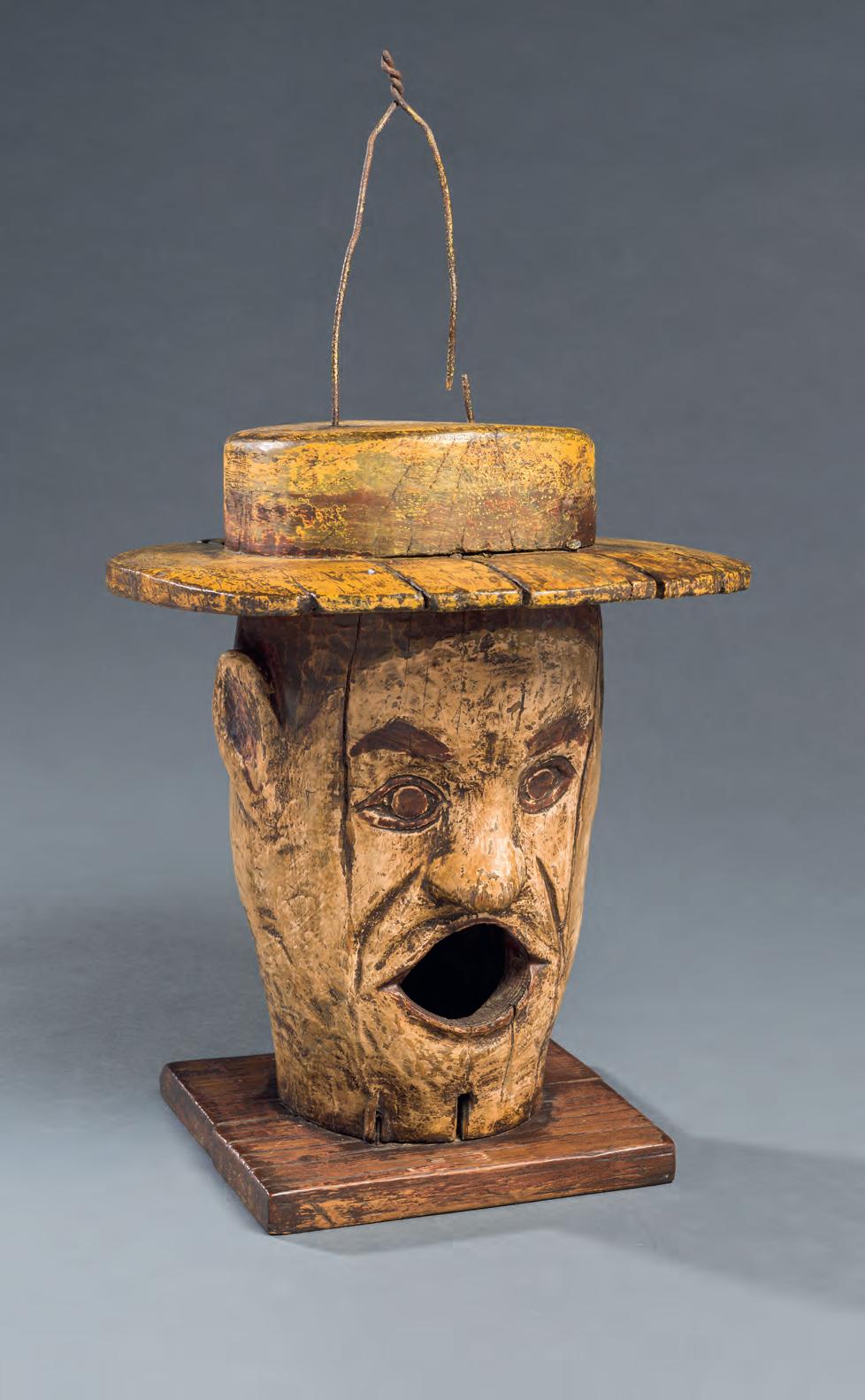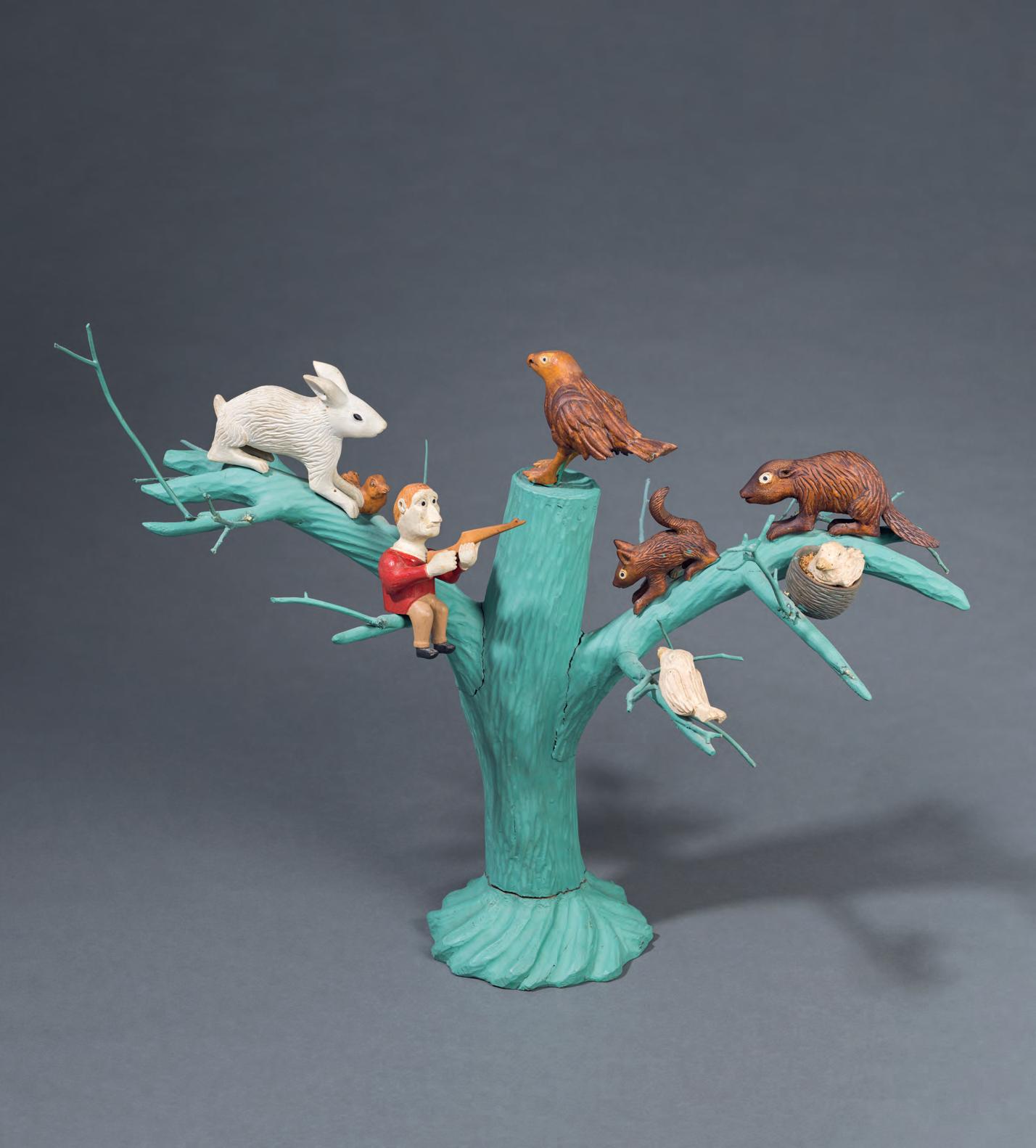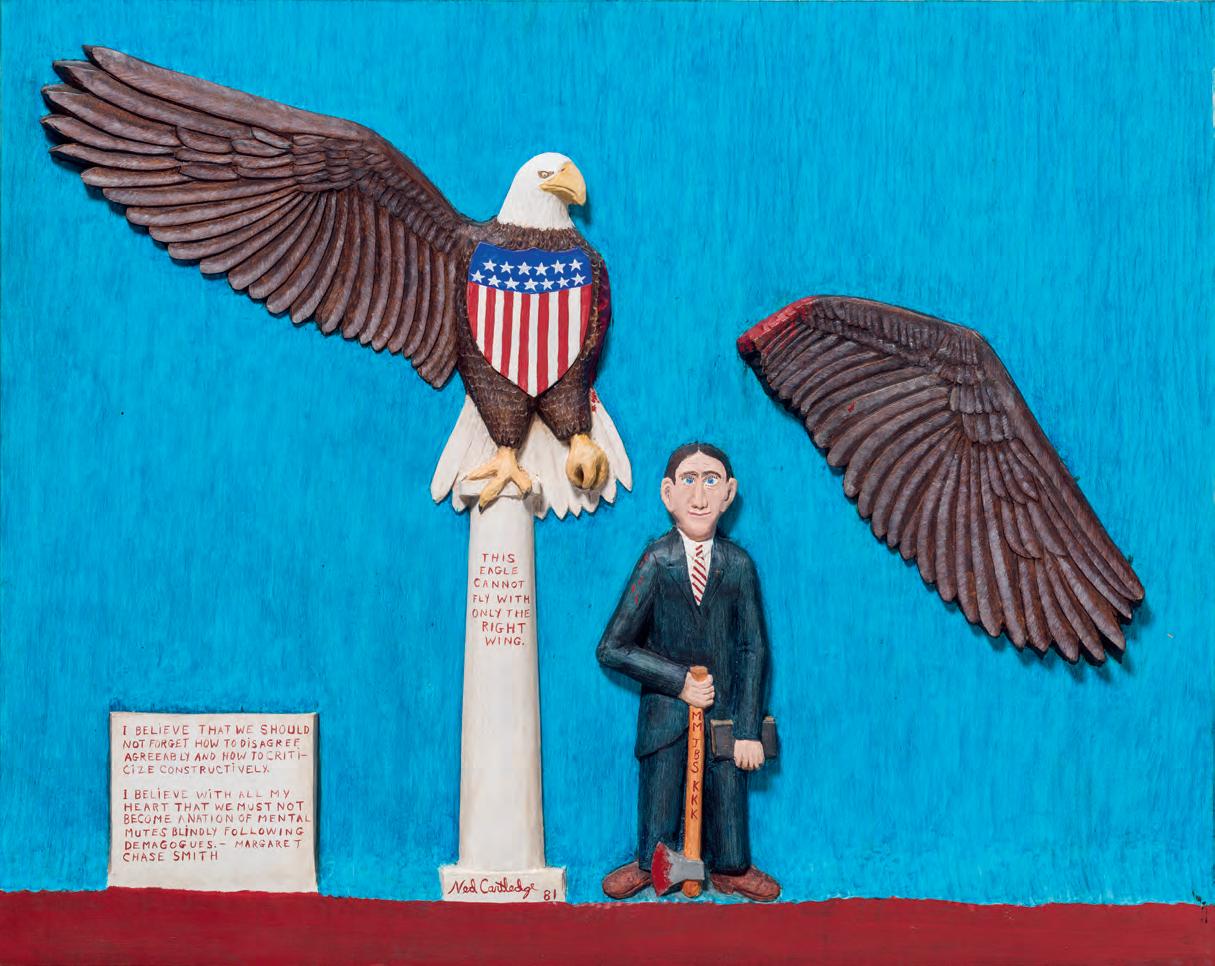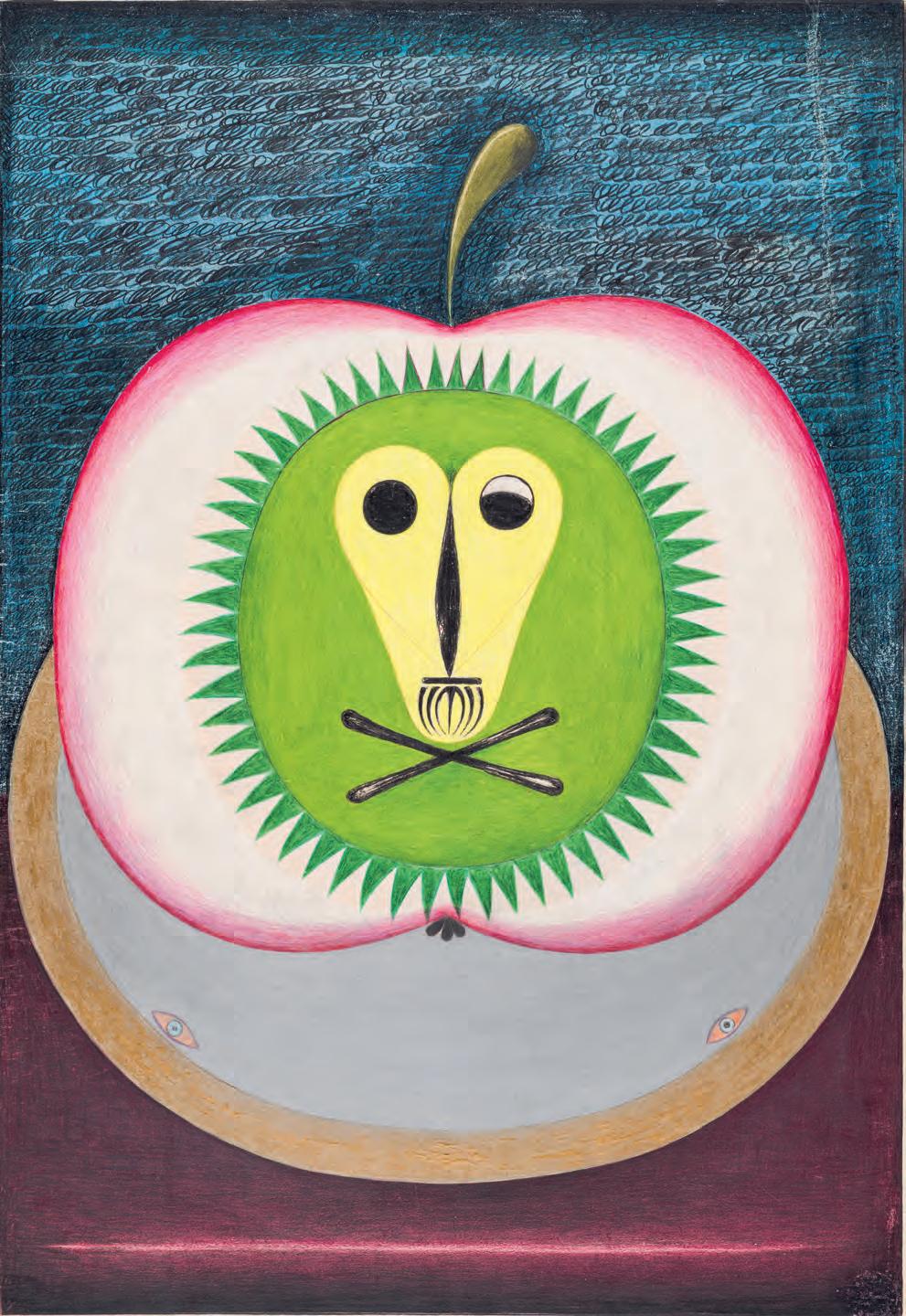Creating Connections
Self-Taught Artists in the Rosenthal Collection





Interview with Richard Rosenthal by Julie Aronson
Contributions by Olivia Sagan and Charles Russell
Cincinnati Art Museum in association with D Giles Limited

In Elizabeth Strout’s quietly surprising novel Olive, Again, the enigmatic protagonist proposes that our job in life is simply “to bear the burden of the mystery with as much grace as we can.” 1 Art, its making, and our encounters with it are amongst the handful of things known to make the burden of that mystery lighter. And while lightening the burden, art also deepens the mystery—but what mystery, after all, does not benefit from a deepening?
In this essay to celebrate the experience of this remarkable exhibition, Creating Connections: Self-Taught Artists in the Rosenthal Collection, I offer a few things. In the tradition of narrative, it will tell a story of how one might think up an image, think of an image, think through as well as by and in an image—prepositions, small and unassuming things, being so very important. It will also lightly explore the attention by which an image is apprehended, and by whom. As a story, it offers a framework on which to hang your own thoughts and plot your own encounter with an image, or your own creating of one. That framework acts as a scaffold with transoms joining genres and disciplines and diagonal braces securing narrative strands from my research. This research, with artists with long histories of mental ill health, for whom art, in the words of the painter Dorothea Tanning, “has always been the raft onto which we
climb to save our sanity,” 2 mines auto/biography and remembering and summons us into a better understanding of the self-taught artist. The scaffold will ask you for a while to join in the deep mystery of the art encounter and to examine the texture of the transformative potential of aesthetic experience. It asks that you join me in questions that have exercised not only art historians, philosophers, anthropologists, and psychologists, but, crucially, the layperson, too, who stops to stare and wonder and feel and in so doing has the burden of the mystery of life altered. With the mystery lightened and deepened, it, and we too, are increased, enhanced, entranced. And we go on our way. An exhibition such as this poses messy, playful, and rich questions. Questions about what a pedagogy of art can be, and how learning is “uncannily organized by repetitions of past investments and conflicts.” 3 Questions about exactly what is that drive to make an image, to externalize something from one’s mind’s eye, to lose sleep in the doing of it, to despair, but then to exult at the one tiny stroke or fleeting moment that feels right, like a private coming home. How does art making act so poignantly as balm, as provocation, as distraction, as galvanizer of other journeys, “simply” through what the scholar Ellen Dissanayake referred to as the “making special” through art? 4 Such an exhibition

 Rosenthal living room, 2022
Rosenthal living room, 2022
Cat. 1
Unidentified Artist (American)
Bird House
circa 1920–30
carved and painted wood and wire 18 1/2 × 10 × 111/2 in.
(47 × 25.4 × 29.2 cm)
“As a boy my husband delivered newspapers in the 1930s and was fascinated by this birdhouse as it sat on a fence post. We only live three doors away from the homestead now. The original owner (in the 1930s) was Ed Lewis. There was only one other that came out of a garage sale in Punxsutawney (7 miles) not as nice. . . . I was always sorry I sold it but I’ve watched it change hands at least 5 times. I think you are very safe in saying it is Western Pennsylvania, and probably definite on the date give or take a few.”
Jacqueline Homan, June 4, 1990, quoted in Richard Rosenthal files.
Cat. 2
Adélard Turgeon
Born 1883 Saint-Anselme, Quebec, Canada Died 1968 Saint-Anselme, Quebec, Canada
Hunter’s Delight
circa 1950
carved and painted wood 20 1/4 × 25 × 14 in.

(51.4 × 63.5 × 35.6 cm)
In this whimsical, crisply detailed sculpture, a hunter in a bright red coat perches on a branch surrounded by a variety of wildlife. The critters include an oversized rabbit and a beaver, species that in nature do not climb trees. Like other farmers who turned to carving, Adélard Turgeon whittled as a pastime and made sculptures to entertain children.

Cat. 20
Ned Cartledge
Born 1916 Canon, Georgia
Died 2001 DeKalb, Georgia
Temperance
1970

carved and painted wood
32 × 36 1/4 in. (81.3 × 92.1 cm)
“I say what I want to say— not cutesy things for folk art collectors.”
Ned Cartledge quoted in Chuck and Jan Rosenak, Museum of American Folk Art Encyclopedia of Twentieth-Century American Folk Art and Artists (New York: Abbeville Press, 1990), 68.

carved and painted wood 20 × 25 in. (50.8 × 63.5 cm)
“Then along when the Vietnam War came along, I began to do what I call social and political comment. I was one of the old folks opposed to the . . . Vietnam War.”
Ned Cartledge, interview by William Volkersz, March 12, 1984, Archives of American Art, Smithsonian Institution, https://www.aaa.si.edu/collections/ items/detail/transcript-interview-nedcartledge-22668.
Cat. 45
Adolf Wölfli
Born 1864 Bern, Switzerland
Died 1930 Bern, Switzerland
Elisabeth Bieri
1907
graphite pencil and crayon on paper
35 1/2 × 47 1/4 in. (90.1 × 120 cm)
This elaborate drawing on conjoined sheets of paper may be among the first made in color by Adolf Wölfli, who spent most of his adult life in the Waldau Clinic in Bern as a psychiatric patient. Amid vivid and dense scrolling patterns that make the work resemble a textile, he included his name in large letters and a plethora of heads, birds, musical notations, and (near the bottom) the name Elisabeth Bieri from his troubled boyhood.

Cat. 46
Friedrich Schröder-Sonnenstern
Born 1892 Kaukehmen, East Prussia (now in Russia)
Died 1982 Berlin, Germany
Death Winking in the Moral Apple of Life (Der schielende Tod im moralischen Lebensapfel)
1956
crayon on cardboard
28 3/4 × 20 1/16 in. (73 × 51 cm)
Inscribed in an apple is an insectlike death’s head atop crossbones. This motif appears more than once in the fantastical colored drawings and unique symbolism of Friedrich Schröder-Sonnenstern. The Surrealists and Jean Dubuffet embraced his highly inventive artwork, some of which features sexual imagery and conflations of human and animal forms.
